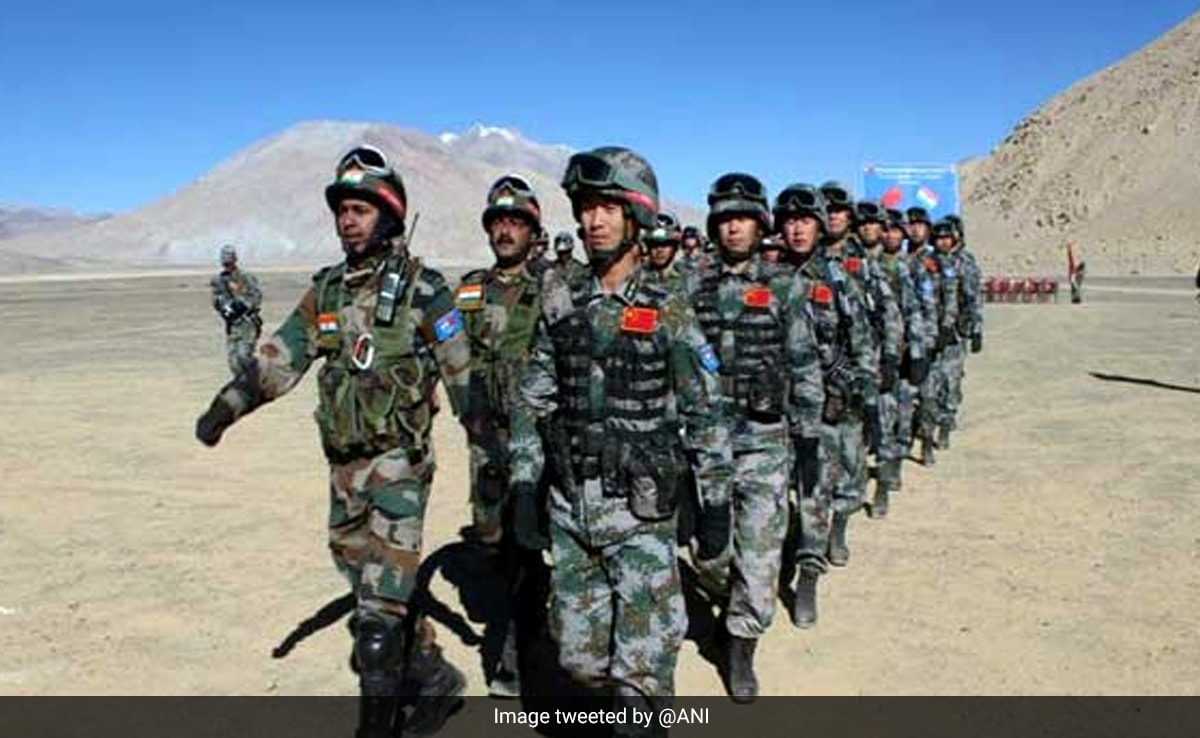The top-level 18th round of corps commander discussions, which are more advanced than the Major General talks, at the Chushul-Moldo border meeting place on April 23 after a pause of more than four months failed to produce any tangible results.

Ladakh Conflict Talks: Delicate Negotiations
In the midst of the ongoing military conflict in eastern Ladakh, which has now lasted for four years, India and China had significant general-level discussions on Tuesday at Daulat Beg Oldie (DBO), which is near the critical troop stand-off location of Depsang Bulge or Plains in the north.
A “routine border management meeting” that is regularly held at the battalion, brigade, and division levels to “maintain security and stability” along the Line of Actual Control was what defence sources referred to as the discussions between the commander of the 3 Infantry Division, Major General P K Mishra, and his People’s Liberation Army (PLA) counterpart.
China has not yet agreed to India’s demand for troop disengagement at the strategically located Depsang Plains and the Charging Ningle Nallah (CNN) track junction at Demchok as the first step towards eventually de-escalating and de-inducting the over 50,000 troops each forward deployed with heavy weapon systems in eastern Ladakh. This is despite the fact that the two sides exchanged “proposals and counter-proposals’ in that dialogue.

The Depsang Bulge, a tabletop plateau at a height of 16,000 feet, is the source of the most hostility. Here, the PLA has been actively obstructing Indian forces for about 18 kilometres, which India deems to be its own land.
Defense Upgrade Amidst Conflict
In the midst of its ongoing military conflict with China, India is also speeding up its production of short- and long-range conventional missiles for significant non-nuclear attacks against adversary targets. Separately, it is also consolidating its nuclear-triad for strategic deterrence.
The long-range land-attack cruise missiles (LR-LACMs) and submarine-launched cruise missiles (SLCMs), with a range of 1,000 km, will also be ready for production within a couple of years, top defence sources told TOI. The Pralay ballistic missiles have a strike range of 150 to 500 km.
In the new integrated rocket force (IRF), which will be established in the lead-up to the tri-service theatre commands, the surface-to-surface Pralay tactical missiles and the subsonic LR-LACMs will join the BrahMos supersonic cruise missiles, Pinaka multi-launch rocket systems, and other stand-off weaponry.
Pralay Missile Revolutionizes India’s Defense
For the IAF to receive 120 Pralay missiles, the Rajnath Singh-led defence acquisitions council has already given its initial approval, or “acceptance of necessity (AoN)”, which would be followed by the Army receiving another 250 Pralay missiles.
India would abandon its strategy of exclusively having ballistic missiles with nuclear payloads with the addition of Pralay. “Up to this point, ballistic meant nuclear for India. However, the source noted that Pakistan and China also possess conventional and nuclear ballistic missiles.

Pralay is equipped with a guidance system that includes a cutting-edge navigation system and integrated avionics, and it is capable of delivering a large number of explosives with accuracy. Its quasi-ballistic trajectory can be modified to avoid missile defence systems. Even as commercial negotiations for production take place, Pralay will now move forward with user trials, according to the source.
A smaller, lighter, but extremely capable BrahMos-NG missile’s basic design has also been finished. This will guarantee that BrahMos can be carried by opponents besides heavyweight Sukhoi-30MKIs, according to the source.













